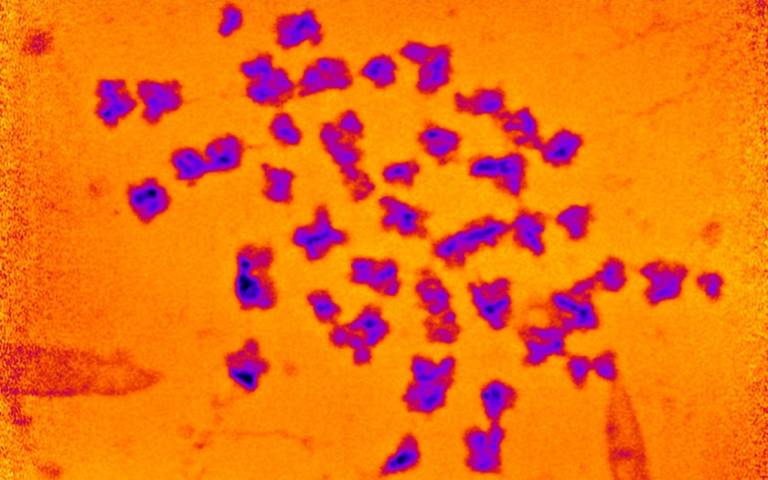Scientists puzzled by 'unexplained excess mass' lurking in human chromosomes
Human chromosomes weigh about 20 times heavier than the DNA within them. So where's all this extra mass coming from?

How much do you weigh? No, not your body weight (we're not here to judge) — but the weight of your chromosomes, those X-shaped bundles of genetic instructions that make you you?
If you don't know offhand, then scientists have you covered. Using one of the U.K.'s most powerful X-ray beams, a team of researchers recently measured the mass of the 46 human chromosomes.
The results were surprising: Each chromosome was about 20 times heavier than the DNA contained inside them — a much greater mass than the researchers anticipated, according to their study published March 31 in the journal Chromosome Research.
Related: Is the Y chromosome dying out?
"Our measurement suggests the 46 chromosomes in each of our cells weigh 242 picograms (trillionths of a gram)," study co-author Ian Robinson, a professor of physics at University College, London, said in a statement. "This is heavier than we would expect, and, if replicated, points to unexplained excess mass in chromosomes."
Each human cell normally contains 23 pairs of chromosomes. Within each chromosome is one DNA molecule and a plethora of proteins that serve a variety of functions, such as compressing your 6.5-foot-long (2 meters) strands of DNA into teensy bundles small enough to fit into individual cells.
The U.S. government-run Human Genome Project revealed, among other things, the mass of DNA molecules — however, the weight of the chromosomes that house these molecules remained a mystery. Understanding this could lead to further insights about the complex structure of chromosomes, which are studied extensively by medical labs for things like cancer diagnoses, according to the researchers.
Sign up for the Live Science daily newsletter now
Get the world’s most fascinating discoveries delivered straight to your inbox.
To calculate the mass of a standard set of 46 human chromosomes, the study authors used a technique called X-ray ptychography — essentially, creating a 3D model of the chromosomes by shooting them with an extremely powerful X-ray beam at the U.K.'s Diamond Light Source science center in Oxfordshire. With this model, the researchers could calculate the precise number of electrons in each chromosome, allowing the researchers to estimate the chromosomes' total mass.
The fact that chromosomes weigh 20 times more than the DNA within them puzzled the team; so far, there's no good explanation for this "excess" mass, but further study could reveal the secrets buried below the X.
Originally published on Live Science.

Brandon is the space/physics editor at Live Science. His writing has appeared in The Washington Post, Reader's Digest, CBS.com, the Richard Dawkins Foundation website and other outlets. He holds a bachelor's degree in creative writing from the University of Arizona, with minors in journalism and media arts. He enjoys writing most about space, geoscience and the mysteries of the universe.










